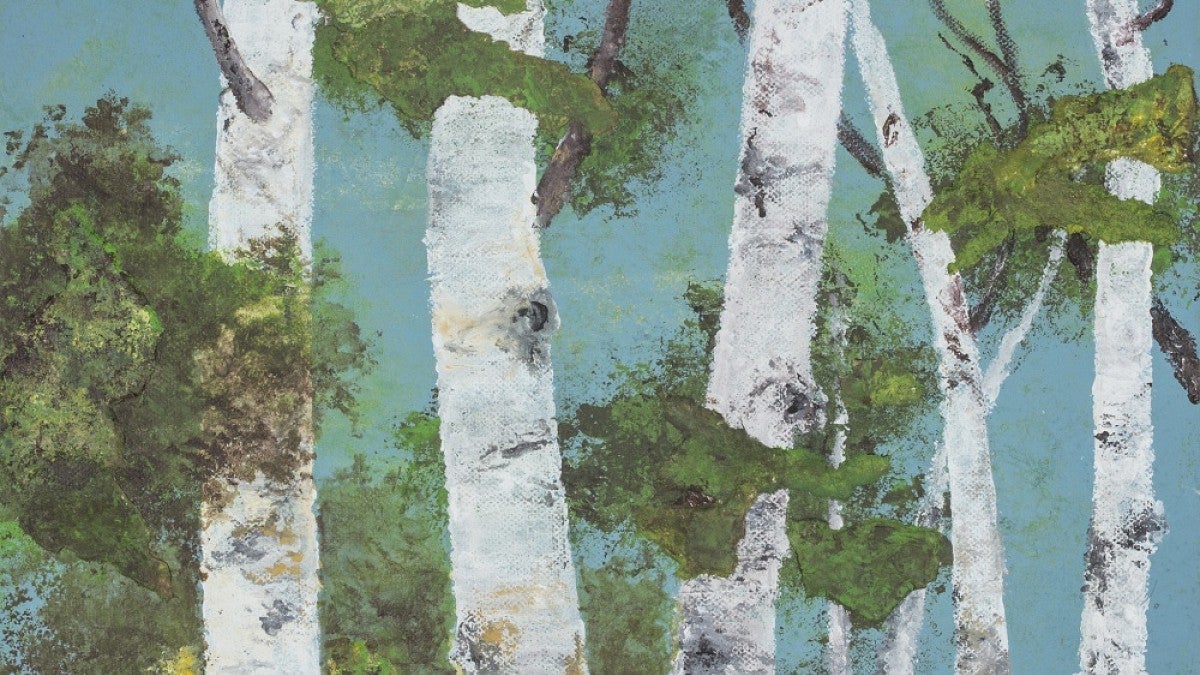Three weeks of seclusion. Nine explorations of nature through painting, drawing and collage.
See it all at the UO’s Jordan Schnitzer Museum of Art, which will present the exhibition “Keith Achepohl: Vision of Nature/Vessel of Beauty” from Jan. 20 to April 29. This body of work by Eugene-based artist Achepohl was inspired by three weeks spent at the Morris Graves Foundation Artist Residency in 2011, followed by a second stay in 2016.
The exhibition will open with a free reception on Friday, Jan. 19, from 6-8 p.m.
“Seldom has an artist been so inspired by a residency,” said Jill Hartz, Jordan Schnitzer executive director and co-curator of the exhibition. “It’s been thrilling to see each new work as it’s been completed and then to step back and see how it all holds together and creates its own world. Each series and study so clearly shows the artist's mastery of aesthetics, media and techniques, which are imbued with his contagious curiosity and intensity of experience.”
Achepohl is a Professor Emeritus at the University of Iowa, where he was head of the printmaking program. His residencies took place at “The Lake” in Loleta, California. Oregon-born artist Morris Graves established The Lake, a retreat located inside 150 acres of ancient rainforest, before his death in 2001.
“It was easy to concentrate on a group of plants and begin witnessing the cycle from a young green stem growing into a robust maturity, finally transitioning into its final stage as its sleek lines shriveled and achieved a proud baroque character,” Achepohl wrote in his artist statement. “A single tree could be observed many times, revealing a different landscape in the intricacies of its bark and branches at each perspective. The Lake provided an endless source of material to mentally record what I could record at the moment, and to this day those visions have generated mnemonic responses as significant as the initial encounters.”
Achepohl worked in seclusion during his residencies, which affected both his subject matter and choices of media. The results, as presented in the exhibition for the first time, are nine distinct yet interrelated explorations of the plants and trees that he observed at Morris Graves’ final home.
Although the finished pieces are wholly of nature, they are, according to the artist, neither landscapes nor botanical studies. He describes them as “more fantasy than reality, an intensely personal language of nature that developed from careful observation to mnemonic response.”
“Keith’s impressions of The Lake inspired him to expand his ways of art-making and experiment with collage, acrylic paint and varying scale,” said Danielle Knapp, associate curator at the Jordan Schnitzer and co-curator of the exhibition. “Viewers get to have an immersive experience in the work.”
At 2 p.m. on Saturday, Jan. 20, Achepohl, Hartz and Knapp will discuss the exhibition and Achepohl’s experiences at the Morris Graves Residency. Robert and Desirée Yarber, directors of the Morris Graves Foundation, and Cory Gundlach, curator of the exhibition “Arts of Africa, Oceania, and the Americas” at University of Iowa Museum of Art, will join the discussion.


